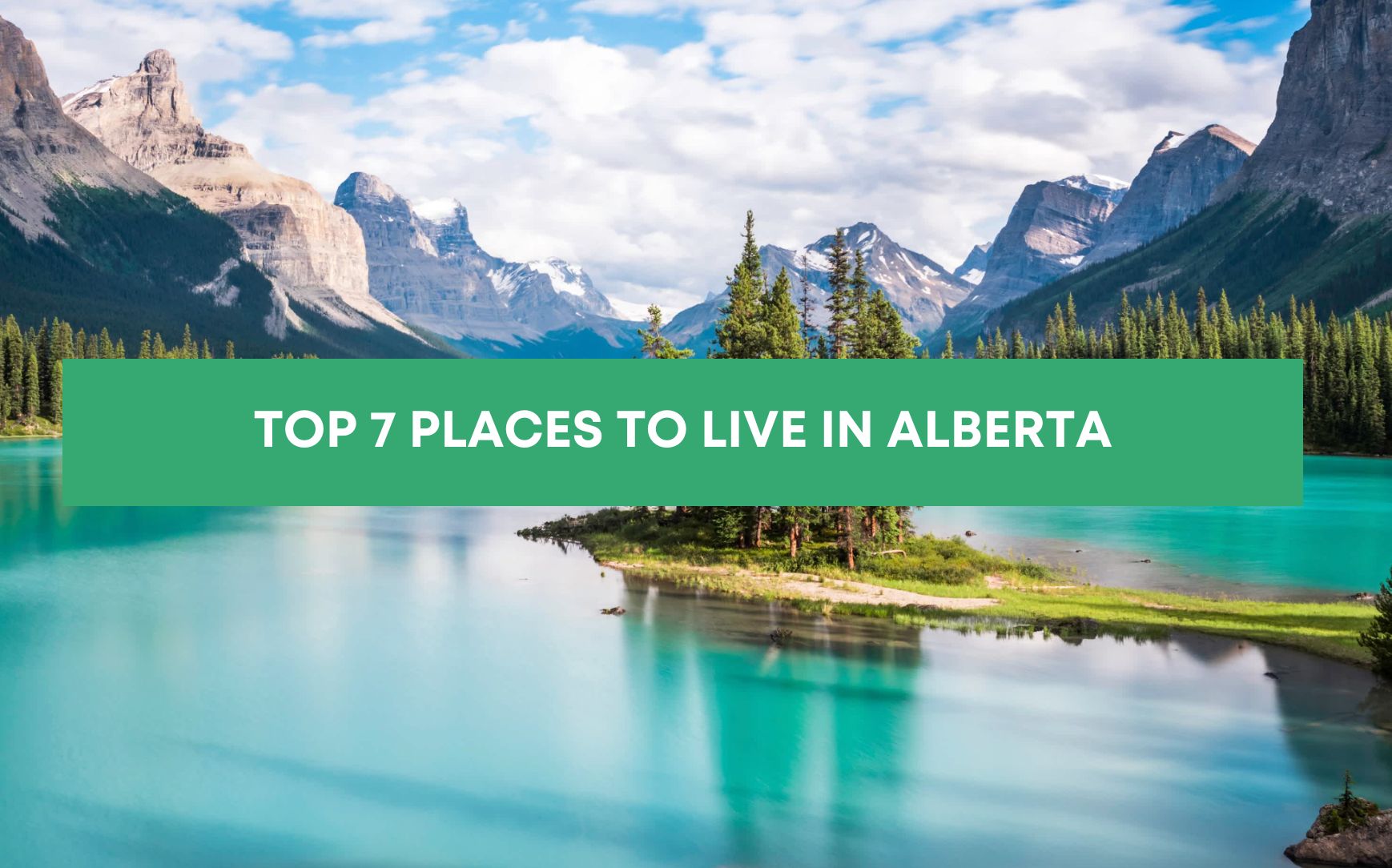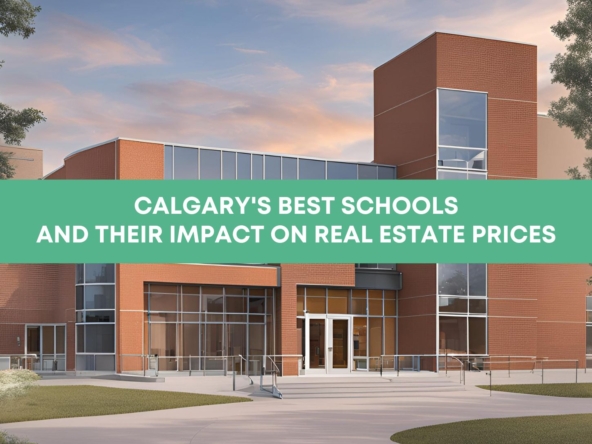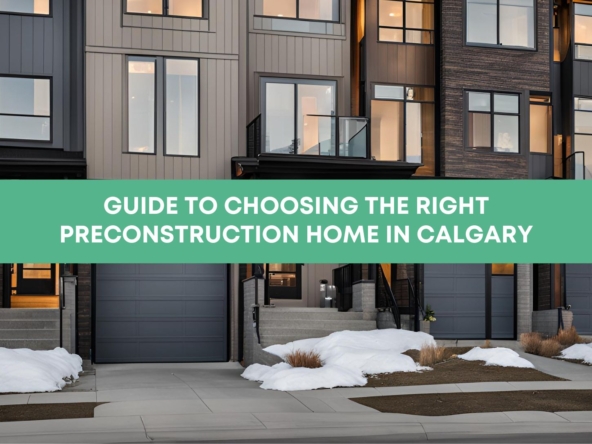Alberta, one of Canada’s ten provinces, is renowned for its economic vitality and natural beauty, making it an attractive destination for many. Bordered by British Columbia, Saskatchewan, the Northwest Territories, and Montana, Alberta stands out with its diverse landscapes, from prairies in the south to boreal forests in the north.
Before we get into the list of the top 7 places to live in Alberta, let’s take a look at some of the reasons more people are moving to this beautiful province in the first place.
Economic Strengths
- High Median Household Income: Alberta ranks fourth in Canada for median household income, with a notable figure of $77,700 after taxes in 2023. Edmonton, the provincial capital, outstrips this with a median income of $97,800.
- Above-Average Wages: The average salary in Alberta is the highest among the provinces at $67,247.96, reflecting the strong job market.
- Vibrant Job Market: With an unemployment rate slightly above the national average at 5.9%, Alberta offers diverse employment opportunities, especially in its primary sectors: oil and agriculture. Other high-demand sectors include nursing, retail and wholesale management, information systems, and transportation.
Affordable Living
- Reasonable Property Prices: Compared to its neighbors, Alberta presents more affordable housing options. The average price for a single-family home was $455,891 in October 2023, significantly lower than in British Columbia.
- Low Taxes: Alberta is known for its favorable tax rates, with one of the lowest income tax rates in Canada.
Quality of Life
- Robust Healthcare System: Residents benefit from the Alberta Health Care Insurance Plan, offering comprehensive coverage for various health services.
- Scenic Beauty: Alberta’s natural landscape, including its mountains, foothills, caves, and the Athabasca Sand Dune Ecological Reserves, offers a plethora of exploration opportunities.
- Cultural Vibrancy: Despite some limitations in rural nightlife, cities like Edmonton, known as ‘The Festival City’, offer a rich tapestry of cultural events.
However, prospective residents should also consider the following challenges:
- Harsh Winters: Particularly in the north, Alberta experiences longer and colder winters than some coastal provinces.
- Road Maintenance Issues: Many roads and highways in Alberta require maintenance, affected by the severe winter conditions.
- Higher Crime Rate: Notably, Alberta has a high crime rate, although measures are in place to address this issue.
- Income Tax Disparity: Lower-income earners might find Alberta’s tax rates less favorable compared to higher earners or residents in other provinces.
In conclusion, Alberta’s diverse cities offer a blend of economic opportunities, affordable living, quality healthcare, and natural beauty, making it a great choice for many. However, the considerations of climate, infrastructure, and social aspects should be weighed carefully when deciding to make Alberta your home.
Calgary: A Bustling Metropolis with Endless Opportunities
Calgary, consistently ranked as one of the most livable cities in North America and among the world’s top 10, offers a unique blend of economic prosperity and quality of life. Known for its robust economy, particularly in the oil and gas industry, Calgary presents abundant job opportunities. The city’s affordability is a significant draw, with relatively low housing costs and taxes compared to other Canadian cities.
Climate and Outdoor Lifestyle
Calgary’s weather, while unpredictable due to the Chinook winds, is generally pleasant and conducive to an array of outdoor activities. Summers are warm, though not excessively hot, and winters, while cold, are milder than in many other parts of Canada. This climate makes Calgary ideal for outdoor enthusiasts who enjoy skiing, hiking, and exploring the beautiful Canadian Rockies nearby.
Cultural Richness and Community
The city is a cultural hub, hosting events like the Calgary Stampede and numerous music festivals. Museums, art galleries, restaurants and the Calgary Zoo add to the city’s diverse cultural landscape. Moreover, Calgary’s cowboy culture and vibrant nightlife provide a unique living experience.
Safety and Education
Calgary is known for its low crime rates, making it a safe and family-friendly city. It boasts one of the most extensive outdoor pathway and bikeway networks in North America, providing residents with ample opportunities for an active lifestyle. The city’s safety measures, including proactive steps by the Calgary Police Service, ensure a secure living environment. Additionally, the Alberta School System offers quality education from kindergarten to university, ensuring well-equipped and staffed schools for children.
In summary, Calgary’s strong economy, accessible outdoor activities, rich cultural scene, safety, and quality education system make it an outstanding choice for those seeking a vibrant and fulfilling lifestyle.
Edmonton: The Cultural Heart of Alberta
Edmonton, Alberta’s capital city, offers a dynamic blend of a strong job market, affordable living, and rich cultural diversity. Known for its significant role in the oil and gas industry, Edmonton provides a variety of job opportunities across different sectors, contributing to a strong local economy and rising average salaries.
Affordability and Accessibility
Edmonton stands out for its lower cost of living compared to other major Canadian cities like Toronto or Vancouver. Housing is particularly affordable, with average family home prices and rent significantly lower than in other major cities.
Natural Beauty and Outdoor Activities
Edmonton’s location in central Alberta makes it a gateway to natural attractions like Elk Island National Park and the iconic Rockies parks, Banff and Jasper. Within the city, the North Saskatchewan River and a network of parks offer ample green spaces for residents to enjoy.
Multiculturalism and Festivities
Reflecting Canada’s multicultural ethos, Edmonton is home to a diverse population, with a significant portion of immigrants adding to the city’s cultural richness. This diversity is evident in its neighborhoods, restaurants, and festivals. The city is also nicknamed “Festival City,” hosting over fifty festivals annually, catering to a variety of interests including arts, food, music, and sports.
Family-Friendly Environment
Edmonton is an excellent city for families, offering affordable housing, a range of educational options from primary to post-secondary levels, and family-oriented amenities like the West Edmonton Mall, one of the largest shopping malls in North America.
Challenges to Consider
Prospective residents should be aware of Edmonton’s long, cold winters, which can be challenging, especially for those unaccustomed to such climates. Infrastructure, particularly roads, requires improvement, and the city’s spread-out nature can make public transportation less efficient, leading to heavy traffic. Additionally, the city has an above-average crime rate, although this varies significantly between neighborhoods. There is also a perception of segregation in certain areas, impacting housing prices and amenities.
In summary, Edmonton’s economic opportunities, affordable housing, cultural diversity, and access to nature make it an attractive option for many. However, potential residents should consider the city’s climate, infrastructure, and social aspects when making their decision.
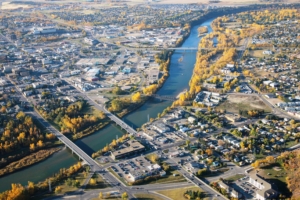
Red Deer: The Charm of Central Alberta
Red Deer, Alberta’s third-largest city, is an increasingly popular destination for homeowners and investors. Located conveniently between Calgary and Edmonton, it offers a unique mix of urban amenities and natural beauty.
Affordable and Comfortable Living
- Cost of Living: Red Deer’s cost of living is relatively lower compared to other parts of Alberta and Canada. The median home prices are in the mid-$300s, offering affordability in the housing market.
- Diverse Housing and Lower Rents: The city provides a variety of housing options, with rents ranging from under $1,000 for smaller apartments to nearly $2,000 for larger units.
Employment and Economy
- Job Market: Red Deer boasts a growing and diverse job market, with a lower unemployment rate than other Alberta regions. Key industries include healthcare, retail, education, petroleum services, and energy. It’s also a regional transportation and energy production hub, supporting a variety of associated industries.
Outdoor Activities and Local Attractions
- Recreational Opportunities: There are ample outdoor activities available, such as skiing at Canyon Ski Resort and exploring Kerry Wood Nature Centre and Bower Ponds. Proximity to the Rockies makes it an ideal spot for nature lovers.
- Cultural Spots and Dining: Red Deer offers diverse cultural attractions, including museums and theaters, and a wide range of dining options from local to international cuisines.
Climate and Transportation
- Climate: The city experiences cold winters and comfortable summers, with temperatures ranging from the high teens to mid-20s during the warmer months.
- Transportation: Red Deer’s transportation system is well-connected, with major highways providing easy access to Calgary, Edmonton, and the Rockies. The city’s relatively compact size ensures minimal traffic congestion and short commuting times.
In summary, Red Deer presents a blend of affordability, economic opportunities, and access to both urban amenities and natural attractions, making it an appealing choice for families and professionals alike.
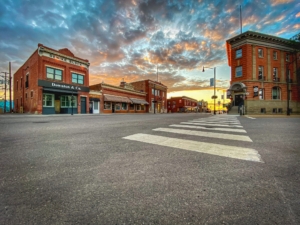
Lacombe: Alberta’s Hidden Gem
Lacombe, a quiet city in central Alberta, is emerging as a sought-after location for its peaceful environment and numerous advantages. Not as bustling as Calgary or Edmonton, Lacombe has garnered recognition as one of Canada’s best places to live, thanks to its economy, affordability, healthcare, and cultural events.
Key Features of Lacombe
- Population and Growth: With about 14,000 residents, Lacombe is experiencing steady growth. The community is known for its friendly and diverse population, influenced partly by the presence of Burman University.
- Climate: Typical of central Alberta, Lacombe experiences long, cold winters and warm summers. The area’s low humidity contributes to spectacular sunrises and sunsets, particularly in winter.
- Economy: The economy is rooted in agriculture, complemented by the oil and gas industry. Significant employment sectors include healthcare, financial services, and education, with the Lacombe Research and Development Centre being a notable contributor.
Living Conditions
- Affordable Living: Property costs in Lacombe are somewhat lower than the Alberta average. The living wage is also lower compared to the provincial average, making it a financially viable option for many.
- Housing and Safety: The city predominantly features single-family homes, with no known “bad” areas, making it a safe and peaceful place to live.
- Healthcare and Education: Lacombe has its own hospital but faces a shortage of family doctors, a common issue in smaller Alberta towns. The city’s schools, under the Wolf Creek School Division, align with Alberta’s high educational standards.
Transportation and Recreation
- Connectivity: Excellent road connections link Lacombe to major cities and the Rocky Mountains. However, the absence of local public transport means having a car is almost essential.
- Outdoor Activities and Sports: The city is an ideal destination for outdoor enthusiasts, with facilities like the Lacombe Sportplex and proximity to natural attractions like Aspen Beach Provincial Park and various lakes.
Cultural and Social Life
- Nightlife and Dining: While Lacombe’s nightlife is limited, it offers a selection of restaurants and a movie theater for entertainment.
In summary, Lacombe is a safe, affordable, and friendly city with a strong connection to nature and outdoor activities, making it an attractive option for those seeking a quieter lifestyle in Alberta.
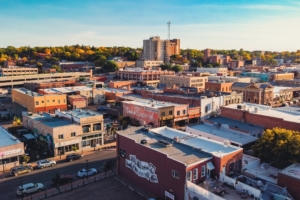
Medicine Hat: A City of Natural Beauty and Affordability
Medicine Hat, a city in southeast Alberta, offers a blend of affordability, scenic beauty, and a strong community spirit, making it an attractive destination for families and retirees.
Advantages of Living in Medicine Hat
- Affordability: Medicine Hat boasts a low cost of living, especially when compared to other cities in Alberta. Food and other amenities are affordable for most residents.
- Housing: The city offers affordable housing options, with homes starting around $300,000 and reasonable rents even for larger family homes.
- Natural Beauty: Known for its picturesque landscapes, including the South Saskatchewan River and valley, Medicine Hat is ideal for those who appreciate outdoor beauty and activities.
- Education: With a comprehensive public school system, including secondary and elementary schools, Medicine Hat ensures quality education comparable to larger Canadian cities.
- Low Crime Rate: The city has a relatively low crime rate, underpinned by a strong law enforcement system, making it a safe place to live and a great retirement destination.
Challenges to Consider
- Climate: The city experiences extreme weather, with hot summers and cold winters. This may be a consideration for those not accustomed to such temperature variations.
- Economic Dependency: Medicine Hat’s economy heavily relies on natural resources like natural gas and coal. Recent infrastructural issues have affected the city’s economy, indicating a vulnerability in economic diversity.
- Job Market: The job market in Medicine Hat is somewhat limited, largely focused on agriculture, mining, and extraction. This lack of job diversity can be a drawback for those seeking employment outside these sectors.
In summary, Medicine Hat is a city with a unique character, offering affordable living, a safe environment, and a connection to nature. While its economic and job market limitations and extreme weather conditions may not suit everyone, its overall qualities make it an appealing place for many to call home.
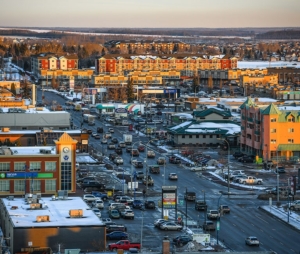
Grande Prairie: A Vibrant Hub of Distinct Opportunities and Challenges
Grande Prairie, Alberta, offers a mix of opportunities and challenges, making it an appealing choice for many, yet presenting certain considerations to be aware of.
Benefits of Living in Grande Prairie
- Affordable Cost of Living: Grande Prairie’s cost of living is about 13% lower than the Alberta and national averages, with significantly lower housing costs. This affordability extends to groceries, healthcare, and transportation.
- Scenic Beauty and Outdoor Recreation: Known for its picturesque landscapes, Grande Prairie offers several outdoor entertainment options. Muskoseepi Park, with its vast parkland, and the fossil-rich Pipestone Creek are highlights. The city is also well-suited for winter sports like skiing and snowboarding.
- Healthcare Facilities: The city is equipped with great regional hospitals and medical facilities. The local government’s focus on healthcare development ensures residents have access to high-quality medical care.
- Strong Real Estate Market: The real estate market in Grande Prairie is booming, providing both good investment opportunities and affordable renting options.
- Public Transportation: The city has a well-organized public transport network, making it convenient for those without personal vehicles. This includes extensive bus routes catering to a wide range of residents.
- Quality Education: Grande Prairie offers a stable and quality education system with many public schools and higher education institutions.
Challenges in Grande Prairie
- High Crime Rates: The city has higher crime rates compared to other Canadian cities, which could be a concern for potential residents.
- Income Tax Laws: The tax laws in Alberta, which Grande Prairie follows, are more beneficial for the middle and upper classes. Higher income taxes might be a concern for some residents.
- Cultural Diversity: Grande Prairie is considered more conservative, with a lack of cultural diversity. This might be challenging for newcomers seeking a vibrant, multicultural environment.
- Cost of Living Considerations: Despite being generally affordable, certain amenities like fuel and utilities can drive up the cost of living in Grande Prairie. The overall cost is higher than in other major Alberta cities like Edmonton and Calgary.
- Extreme Cold Weather: Located at a higher altitude in the northern part of the province, Grande Prairie experiences very cold weather, especially in winter, which could affect outdoor activities and daily life.
In conclusion, Grande Prairie is an attractive option for those seeking affordable living, quality healthcare, and educational facilities, along with outdoor recreational opportunities. However, considerations around crime rates, cultural diversity, and the climate are important factors to consider when deciding to move to this dynamic city.
Canmore: A Mountain Paradise with Its Own Set of Challenges
Canmore, nestled in the Rocky Mountains of Alberta, is celebrated for its stunning scenery, outdoor activities, and wildlife. However, it also presents challenges, particularly in terms of living costs.
Pros of Living in Canmore
- Scenic Beauty and Outdoor Activities: Canmore’s location offers a range of year-round outdoor activities, attracting both holidaymakers and locals who enjoy the great outdoors. The most popular activities include hiking, biking, mountaineering, rock climbing, and winter sports at the Canmore Nordic Centre.
- Transport Connections: While public transport within Canmore and to nearby Banff is available, traveling to Calgary requires a car, taxi, or specific bus services. Despite this, Canmore’s proximity to Calgary International Airport enhances its accessibility for international travel.
- Safe Living Environment: Canmore boasts a low crime rate, significantly below national averages, making it an extremely safe place to live.
- Vibrant Local Economy: Originally a mining community, Canmore’s economy is now primarily driven by tourism, with steady growth in construction as a secondary industry.
Cons of Living in Canmore
- High Cost of Living: Canmore is known for its high living expenses. The living wage is notably higher than the provincial and Calgary averages, and the availability of affordable housing is a persistent issue.
- Limited Nightlife: Although Canmore offers a good selection of bars and restaurants, its nightlife is not as vibrant as larger cities. For more lively entertainment, nearby Banff is a better option.
- Challenges in Public Transportation: Public transport is limited, particularly for travel beyond the Banff/Canmore area. This may necessitate reliance on personal vehicles for broader travel.
In summary, Canmore offers a unique living experience, with its natural beauty and safe environment. However, the high cost of living and limited public transport options are significant considerations for anyone planning to move there.
Special mentions
Alberta offers a variety of appealing cities and towns, each with unique features and opportunities:
- Bonnyville: A blend of rural surroundings and city amenities, Bonnyville has significantly improved its crime rates and offers a strong job market. It’s ideal for those seeking a balance of urban and country living.
- Sylvan Lake: Positioned west of Red Deer, this city offers high living standards and a vibrant community. It’s known for its environmental consciousness and various seasonal activities.
- Camrose: Close to Edmonton, Camrose is suited for those who prefer a quieter, outdoorsy life. It’s nicknamed the Rose City and offers picturesque scenery along its extensive trail system.
- Lloydminster: Unique for being on the border of Alberta and Saskatchewan, it offers a mix of rural climate and urban amenities, with good shopping facilities and high-paying jobs.
- St Albert: Often named the most liveable city in Canada, St. Albert offers a family-friendly environment with a low crime rate, excellent education, and healthcare facilities. Its medium size is perfect for those seeking amenities without big-city bustle.
Final Thoughts on the Top 7 Places to Live in Alberta
In conclusion, Alberta offers a diverse array of cities and towns, each providing unique lifestyles and opportunities. From the vibrant mountain community of Canmore and the scenic beauty of Grande Prairie to the bustling urban environments of Edmonton and Calgary, Alberta caters to a wide range of preferences. Whether you’re drawn to the outdoors, seeking a family-friendly atmosphere, or looking for dynamic job markets, these cities offer something for everyone. The choice depends on your personal and professional needs, balancing factors like cost of living, educational facilities, cultural diversity, and employment opportunities to find the perfect fit in Alberta.
FAQs
Q: What are the best cities to live in Alberta for 2023?
A: The top 10 best places to live in Alberta for 2023 include Calgary, Edmonton, Red Deer, Lethbridge, Okotoks, Canmore, St. Albert, Strathcona County, Cochrane, and Spruce Grove.
Q: How can I find the top 5 places to live in Alberta?
A: You can find the top 5 places to live in Alberta for 2023 by researching online, reading local publications, and consulting with real estate agents or relocation services.
Q: I want to live in Alberta. What are the 10 best places to move to in the province?
A: The 10 best places to move to in Alberta for 2023 are Calgary, Edmonton, Red Deer, Lethbridge, Okotoks, Canmore, St. Albert, Strathcona County, Cochrane, and Spruce Grove.
Q: Which are the largest cities to live in in Alberta?
A: The largest cities to live in in Alberta are Calgary, Edmonton, Red Deer, and Lethbridge.
Q: Is Alberta a great place to call home?
A: Yes, Alberta is a great place to call home, offering a diverse range of urban and rural communities with ample job opportunities, natural beauty, and a high quality of life.
Q: What are the cheapest places to live in Alberta for 2023?
A: Some of the cheapest places to live in Alberta for 2023 include smaller towns and rural communities, as well as certain neighborhoods within larger cities that offer more affordable housing options.
Q: Why is Alberta considered one of the best places to live?
A: Alberta is considered one of the best places to live due to its strong economy, abundant natural resources, diverse cultural scene, and access to world-class outdoor recreational opportunities such as Banff National Park.
Q: Which city is known as the festival city in Alberta?
A: Edmonton is known as the festival city in Alberta, hosting numerous events and festivals throughout the year, including the internationally renowned Edmonton International Fringe Theatre Festival.
Q: Are there great opportunities to live in a smaller town in Alberta?
A: Yes, Alberta offers great opportunities to live in smaller towns, with many of them providing a close-knit community atmosphere, affordable housing, and access to outdoor activities.
Q: How can I determine the best cities to live in Alberta for 2023?
A: You can determine the best cities to live in Alberta for 2023 by considering factors such as job opportunities, housing affordability, quality of schools, healthcare facilities, recreational activities, and overall lifestyle preferences.

